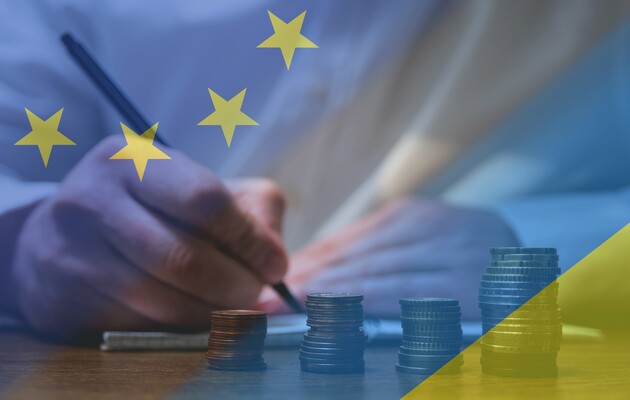Economic relations of Ukraine with the European Union through the prism of the balance of payments
This year, against the background of the growth of financial aid from allied states, the deficit of the current account of the balance of payments also increased, indicating a decrease in the international competitiveness of the economy. This forces us to carefully assess Ukraine's economic relations with the European Union, which is our main donor and trade partner. Our current interaction obviously improves the prospects of Ukraine's membership in the European Union. However, the weakness of the export sector and raw material specialization of Ukraine increase the fundamental instability of the balance of payments.
According to the National Bank of Ukraine (NBU) data for the first nine months of 2023, the current account had a deficit of 5.5 billion dollars, while for the first nine months of 2021 it was $1.5 billion.
While for the same period in 2022, the current account had a surplus of $7.9 billion. (see Fig. 1).
The negative balance of the current account in 2023 was explained by the rapid expansion of the trade balance deficit (see Table 1). If in January-September 2021 the deficit in trade in goods and services was equal to 0.8 billion dollars, then for the same period in 2023 it will be 28 billion dollars, which is 22% of the Gross Domestic Product (GDP).
Over the three quarters of 2023, relative to the same period in 2021, the value of the volume of export goods decreased by 42%, and the value of the volume of imported goods decreased by only 3%. The destruction of production facilities, the complication of transport routes, fluctuations in export prices, restrictions on electricity supply, and the loss of labor in Ukraine became the main reasons for the decrease in the export of goods.
It is worth noting that mineral products (by 52%), ferrous, non-ferrous metals and products from them (by 39%), products of chemical and related industries (by 24%) were the most significant items in the reduction of Ukrainian exports compared to the previous year.
The export of services from Ukraine decreased by 7% during the analyzed period, while the import of services increased by 87%. The negative balance of trade in services was formed mostly as a result of the expenses of Ukrainian refugees abroad: the import of services under the item "personal travel" reached 10.8 billion dollars.
Since the beginning of the Russian aggression, the role of the European Union as a trade partner of Ukraine has grown significantly. The absolute amount of exports of goods to the European Union in January-September 2023 almost corresponded to its value in January-September 2021 – 16.1 billion dollars. However, the share of the European Union in Ukrainian exports increased from 37% in 2021 to 62.5% in 2023 (see Table 2).
While exports from Ukraine to all partner countries decreased by 42% over two years, exports to the European Union decreased by only 2%. This is explained both by the openness of the western border of Ukraine during the war (in contrast to other directions), and by the cancellation by the Council of the European Union of all customs duties, quotas and trade protection measures for Ukrainian exports. Such changes regarding the export of goods related to tariffs on fruits and vegetables, as well as agricultural products and products of agricultural processing, which were previously subject to tariff quotas.
The main components of commodity exports to the European Union in the first half of 2023 were grain crops (almost a quarter of exports), ferrous metals and their products (15%), sunflower oil (9%), ores and iron concentrates (8%). In addition, wood (7%), seeds and fruits of oil plants (7%) also became important components of commodity exports to the European Union. That is, Ukraine remained a supplier of raw products to the European Union market, while the destruction of production assets, infrastructure and erosion of labor resources made it difficult to develop national industries with a high degree of product processing.
Regarding the import of goods from the European Union, during the war, its absolute volumes increased significantly (from 18.4 billion dollars in 2021 to 22 billion in 2023). In addition, the share of the European Union in imports to Ukraine also increased (from 38.3 to 47.3%). Dominant positions in the structure of imports from the European Union were occupied by oil and oil products (17%), ground vehicles (11%) and mechanical machines (7%). Natural gas (6%), pharmaceutical products (5%), plastics and polymers (4%), ferrous and non-ferrous metals (4%) also took a significant position in the import structure.
An additional negative factor was the decision of the European Commission to introduce a temporary ban on the import of four types of agricultural products from Ukraine – wheat, corn, rapeseed and sunflower – to five Eastern European countries until September 15. But even after that date, Poland, Hungary and Slovakia ignored the decision of the European Commission, extending the validity of the specified restrictions. Accordingly, it also negatively affected Ukraine's balance of payments and worsened the external stability of our economy.
The current account deficit in 2023 was combined with an inflow of funds on the financial account (14.9 billion dollars), which generated a positive total balance of payments of 9.4 billion dollars. This situation contrasts with the similar periods of 2021 and 2022, when the overall balance was negative. Non-residents' loans to state administration bodies became the main channel of inflow of foreign currency for financial transactions. Revenues from this channel in January-September 2023 amounted to almost 19 billion dollars.
Among the negative changes in the composition of the financial account, it should be noted an increase in the amount of cash currency in non-bank circulation by 8.2 billion dollars, while in the nine months of 2021 such an increase amounted to only 3.4 billion dollars. The policy of high interest rates, implemented by the National Bank of Ukraine (NBU) in order to reduce the demand for the dollar and increase the attractiveness of hryvnia assets, was obviously not effective.
The banking sector itself played a significant role in withdrawing currency from the Ukrainian economy. The increase in external assets of banks in the form of debt securities of non-residents and deposits in foreign banks for the nine months of 2023 reached 2 billion dollars.
As for compensatory sources of financing, from January 2022 to August 2023, the allied states provided Ukraine with military, financial and humanitarian aid in the amount of 237.9 billion euros (data from the Kiel Institute according to the amount of commitments) (see Table 3). Ukraine received another 12.8 billion euros from the International Monetary Fund (IMF), the World Bank, the United Nations (UN), and the European Bank for Reconstruction and Development (EBRD).
The European Union and its member states in the third quarter of 2023 became the largest donors to Ukraine, documenting the allocation of 132 billion euros in aid, including 83.4 billion euros in financial aid. The European Commission and the Council approved the allocation of 77 billion euros, the governments of the member states of the European Union – 47 billion, and the European Peace Fund – 5.6 billion euros.
Figure 2 demonstrates the role of various donors in the formation of three types of aid to Ukraine. The leaders are the collective institutions of the European Union (84.8 billion euros), the United States of America (69.5 billion), Germany (21 billion) and Great Britain (13.8 billion). Regarding their economic opportunities, such countries as Norway (1.7% of GDP), Lithuania and Estonia (1.3% each), Latvia and Denmark (1.1% each), Poland and Slovakia (0.7% of GDP each) are trying to resist the aggressor.
Unfortunately, most of the financial aid comes to Ukraine in the form of loans (69% in ten months of 2023), which creates threats to debt sustainability and long-term macro-financial stability.
In June 2023, the European Commission announced the creation of the Ukrainian Fund – Ukraine Facility, which should cover Ukraine's short-term reconstruction needs and finance medium-term modernization costs. The indicative volume of the fund's resources is EUR 50 billion for 2024 –2027 (the grant part of the fund is EUR 17 billion, and the loan part is EUR 33 billion).
The Ukrainian fund will have three components:
- financial support of the state for the purpose of implementing reforms and financing investments, ensuring macro-financial stability;
- an investment program with a focus on mobilizing private investments and expanding entrepreneurs' access to financing;
- assistance for joining the European Council through technical expertise and institution building.
While welcoming the creation of such a fund and being grateful to the European Union for its comprehensive support, some problematic aspects should be noted.
First, it is a significant credit component of the fund, which will place an unbearable burden on the country that was devastated by the war.
Secondly, these are optimistic hopes for the attraction of significant amounts of private capital to Ukraine, which are unlikely to be realized in the event of the continuation of hostilities for several more years or the refusal to accept Ukraine into the North Atlantic Treaty Organization (NATO) after the end of the war.
At the same time, in order to restore the external stability of the economy and the dynamic economic growth of Ukraine during the reconstruction period, it would be worthwhile to strengthen the second component of the fund with an orientation towards providing soft loans and grants to Ukrainian entrepreneurs for the creation of export productions in the manufacturing industry.
Thus, the current state of the balance of payments testifies to the structural problems of the Ukrainian economy, without solving which its rapid recovery and modernization seem unlikely. In addition, if the raw material specialization of the national economy is preserved, even close relations with the world's leading countries will not guarantee us long-term economic growth.
Please select it with the mouse and press Ctrl+Enter or Submit a bug

















 Login with Google
Login with Google